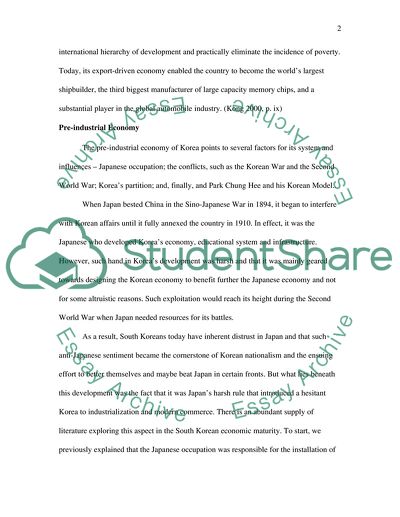Cite this document
(“The Impact of South Korea's Pre-War Manufacturing Experience Essay”, n.d.)
The Impact of South Korea's Pre-War Manufacturing Experience Essay. Retrieved from https://studentshare.org/history/1707417-critically-examine-the-impact-of-south-koreas-pre-war-manufacturing-experience-on-her-pattern-of-a-industrial-structure-and-b-trade-policy-in-the-post-war-e
The Impact of South Korea's Pre-War Manufacturing Experience Essay. Retrieved from https://studentshare.org/history/1707417-critically-examine-the-impact-of-south-koreas-pre-war-manufacturing-experience-on-her-pattern-of-a-industrial-structure-and-b-trade-policy-in-the-post-war-e
(The Impact of South Korea'S Pre-War Manufacturing Experience Essay)
The Impact of South Korea'S Pre-War Manufacturing Experience Essay. https://studentshare.org/history/1707417-critically-examine-the-impact-of-south-koreas-pre-war-manufacturing-experience-on-her-pattern-of-a-industrial-structure-and-b-trade-policy-in-the-post-war-e.
The Impact of South Korea'S Pre-War Manufacturing Experience Essay. https://studentshare.org/history/1707417-critically-examine-the-impact-of-south-koreas-pre-war-manufacturing-experience-on-her-pattern-of-a-industrial-structure-and-b-trade-policy-in-the-post-war-e.
“The Impact of South Korea'S Pre-War Manufacturing Experience Essay”, n.d. https://studentshare.org/history/1707417-critically-examine-the-impact-of-south-koreas-pre-war-manufacturing-experience-on-her-pattern-of-a-industrial-structure-and-b-trade-policy-in-the-post-war-e.


